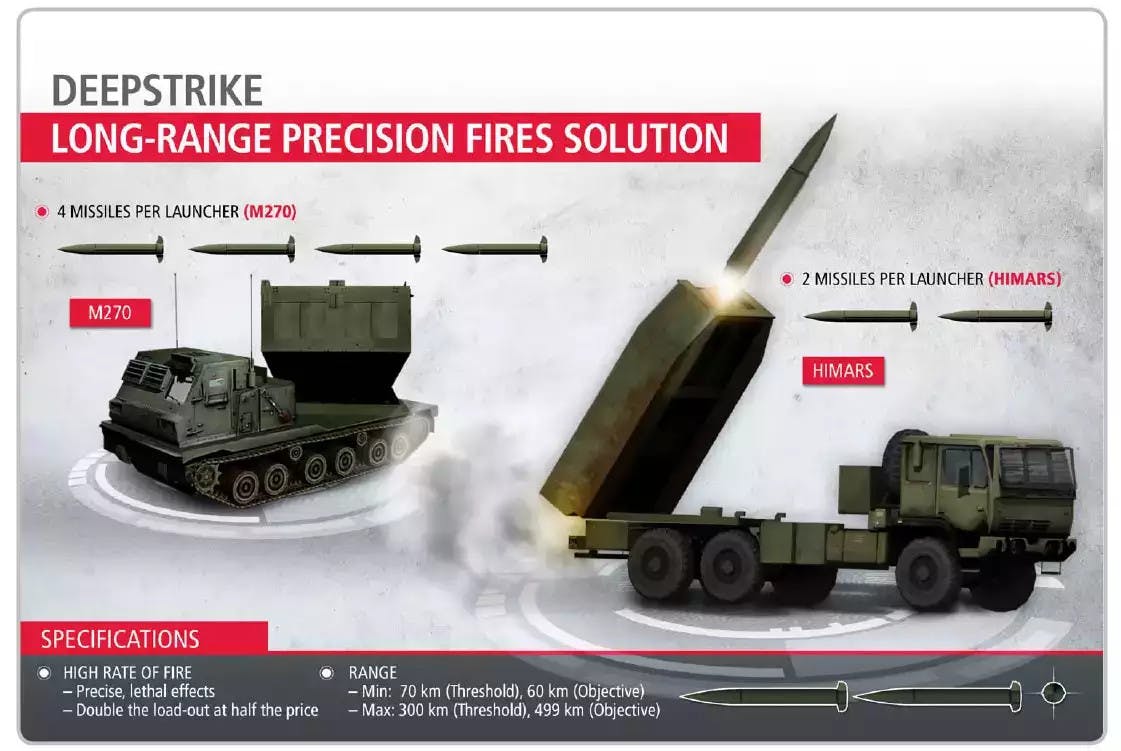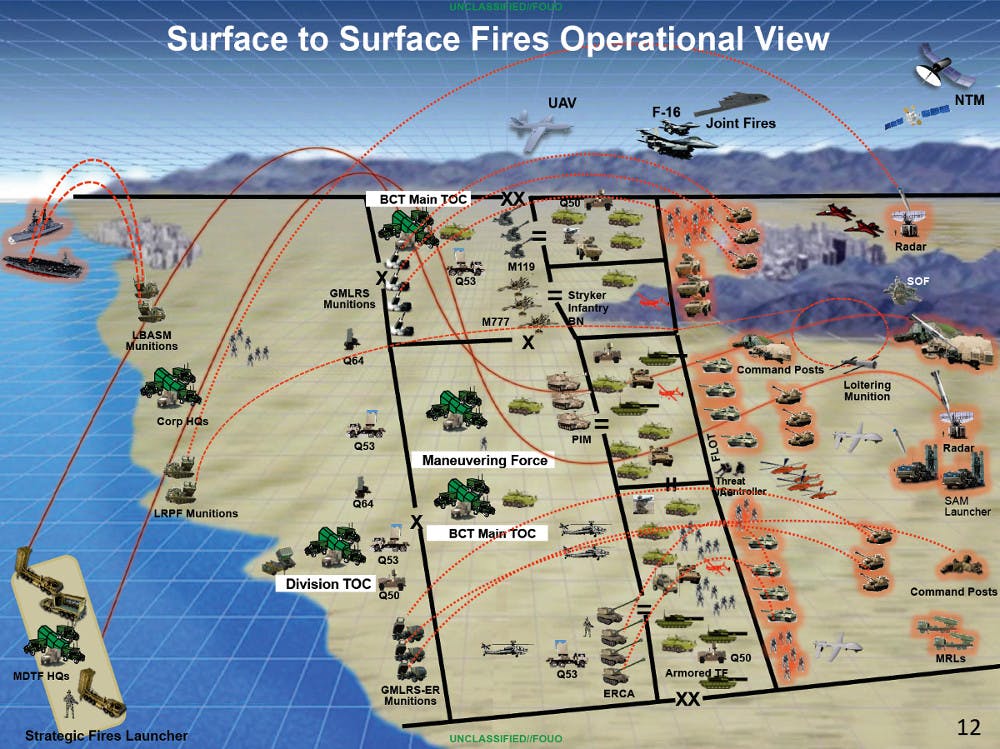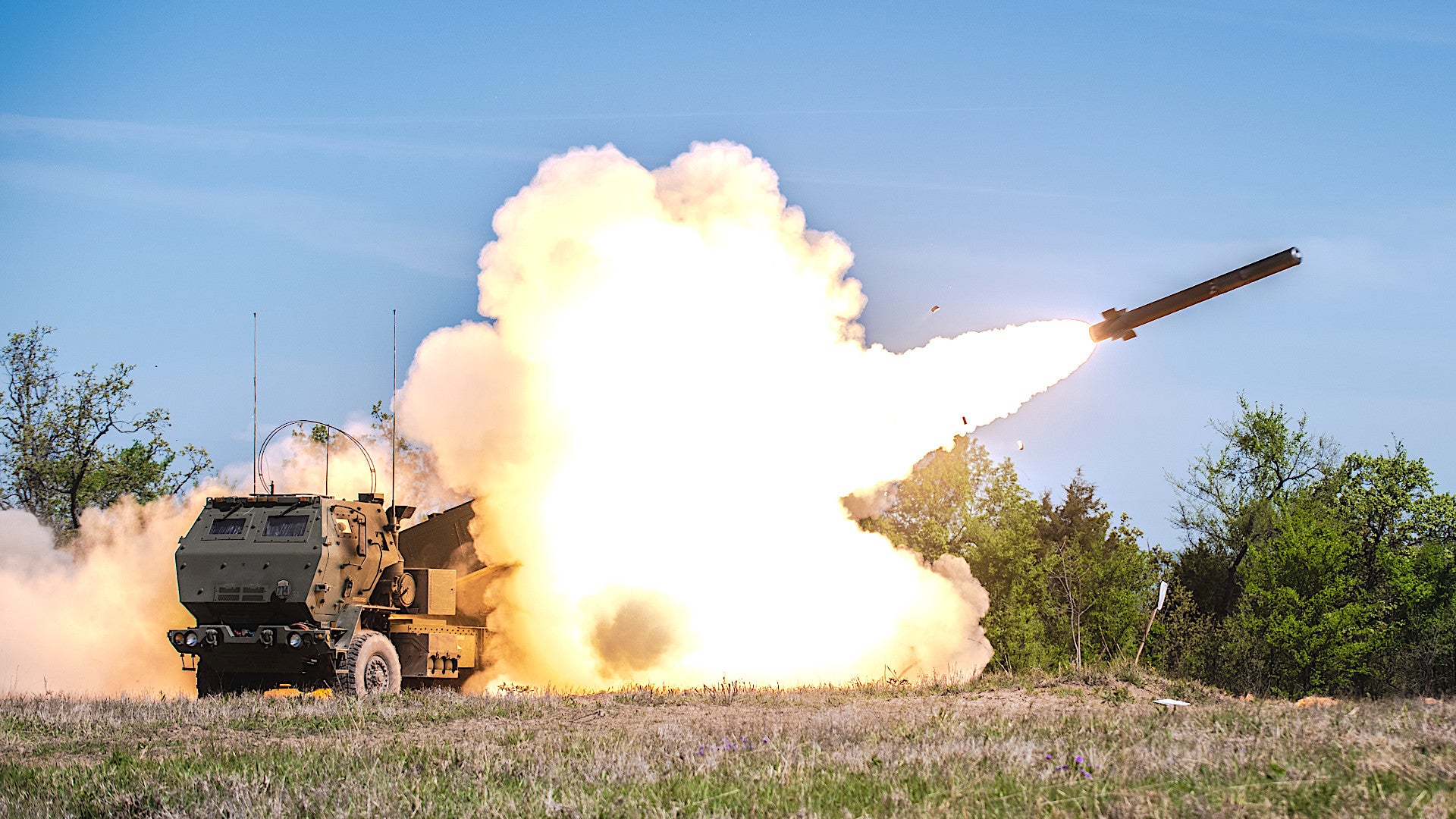Lockheed Martin has successfully conducted the first test launch of its entry for U.S. Army’s Precision Strike Missile program, or PrSM. Its competitor Raytheon reportedly suffered a setback that has pushed the date of its own first test launch into early next year.
The press release from Lockheed Martin did not say specifically when the company’s test launch had taken place, but said it had occurred at the Army’s White Sands Missile Range in New Mexico. A 6×6 truck-mounted M142 High Mobility Artillery Rocket System (HIMARS) fired the missile, which struck a mock target approximately 149 miles away.
“This test flight is the most recent success in a long line of product component and sub-component testing successes conducted as part of our proven development discipline to assure total mission success for our U.S. Army customer,” Gaylia Campbell, Vice President of Precision Fires and Combat Maneuver Systems at Lockheed Martin, said in a statement. “We are confident that our years of demonstrated experience in delivering unmatched Precision Fires capabilities for our U.S. Army customer and our commitment to ensuring affordability will result in the best PrSM option.”
Lockheed Martin also released a brief graphical presentation, seen below, about the test with specific details about the test points. The first test launch demonstrated that the company’s PrSM design could work with the HIMARS system, including successfully exchanging data with the launcher’s fire control system. It also flew the desired distance and reached the target while flying at record speed, though the company declined to specify how fast it was going.

Raytheon was supposed to have conducted the first test of its PrSM design, also known as DeepStrike, in November 2019, according to Defense News. The company has now reportedly rescheduled this launch to take place some time early on in the new year.

The Army itself had hoped these launches would have occurred earlier this year. Unfortunately, Technical issues at a facility belonging to an unspecified sub-vendor supplying components for both Lockheed Martin and Raytheon’s missiles, as well as poor weather, forced the service to push the entire schedule back.
“There were a couple of technical issues that caused us to delay about 90 days for the flight test,” U.S. Army Brigadier General John Rafferty, head of the service’s overarching Long-Range Precision Fires (LRPF) artillery modernization effort, had disclosed in a talk at the Center for Strategic and International Studies think tank in July. “There was a mishap at a facility that caused some of the delay, followed by Mother Nature … extreme weather that made repair at that facility near impossible for a period of time.”
The PrSM program dates back to at least 2017, when it was originally known simply as Long Range Precision Fires (LRPF), with the primary objective of developing a replacement for the Army Tactical Missile System, or ATACMS. HIMARS launchers, which are more often loaded with six 226mm guided artillery rockets, can also be armed with a single ATACMS missile thanks to a universal pod design. The tracked M270 Multiple Launch Rocket System (MLRS) can have two of these weapons in a ready-to-launch configuration, in lieu of a loadout of a dozen 226mm rockets.

Variants of the ATACMS missile have been in service since 1991 and various upgrade programs have improved and expanded their capabilities since then. This has included the introduction of GPS-assisted inertial guidance and large, unitary high-explosive warheads. The original versions of the weapon carried cluster munitions payloads consisting of hundreds of small bomblets.

There had been talk in the past about developing a new type with the ability to hit moving targets for the anti-ship role, but this has largely given way to plans for the acquisition of ground-launched anti-ship cruise missiles and the inclusion of a moving target engagement capability in the PrSM. The Army has also said that the development of a dedicated anti-ship variant of this new missile will follow work on the initial version focused on taking out ground targets.
Raytheon, at least, has also touted their PrSM entry’s modular design, as seen in the promotional video below, as well. This would allow the company to readily reconfigure the weapon to include different rocket motors or warhead, as well as integrate new capabilities in the future, which could include improved multi-mode guidance packages and networked data links.

The Army has stipulated the PrSM contenders both fit inside pods that meet the common dimensions so that they can be rapidly integrated into these existing launchers. In regards to HIMARS, two of the new missiles will be able to fit inside its launcher, compared to just a single ATACMS, which will give units just that much more magazine depth. This commonality will also make PrSM an attractrive option for other HIMARS and MLRS operators, including the U.S. Marine Corps.
However, the biggest advantages that the PrSM will have over ATACMS may just be its additional range and speed, allowing it to engage threats at greater distances and do so faster than ATACMS. The Army wants its new missile to be able to hit targets out to at least 310 miles away, just shy of 125 miles more than the maximum range of ATACMS.
This will make the PrSM more flexible and make it more capable of conducting time-sensitive strikes on critical targets, further reducing the chance that opponents will be able to relocate their assets or otherwise react. This is well in line with a broader Army push to acquire extended-range artillery systems to ensure that its units outrange potential near-peer opponents, especially Russia, which has invested significantly in new, long-range artillery systems in recent years. You can read more about this larger strategy, which includes the development of ground-based hypersonic missiles and super-long-range guns, in this past War Zone piece.

It seems very likely that PrSM’s range will grow even more following the collapse this year of the Intermediate-Range Nuclear Forces Treaty, or INF, between the United States and Russia. This agreement had prohibited the fielding of ground-launched ballistic and cruise missiles, even with conventional warheads, with ranges between 310 and 3,420 miles, which had a direct impact on the PrSM’s range requirements. Brigadier General Rafferty has said in the past that data from both Lockheed Martin and Raytheon indicates that they could readily modify their designs to fly out to around 340 miles, but he added that the Army wants to first make sure they can demonstrate that their designs can reach the original 310-mile range requirement.
“It would fundamentally change the geometry of the battlespace. … You can rapidly deploy and you can put into a position in the very near future [a missile] to be able to have the range of 550 to 600 kilometers [340 to 372 miles],” Secretary of the Army Ryan McCarthy said at the Reagan National Defense Forum on Dec. 7. McCarthy was talking broadly about new missiles for the Army, in general, but his comments further indicate that these are ranges the service is now actively looking at. He also specifically cited the PrSM as a starting place for a future weapon with this kind of extended range.
The Army has said in the past that it hopes to begin fielding the PrSM in 2023. With Lockheed Martin’s first PrSM test now complete and Raytheon’s first launch coming soon, we may start to learn more about the capabilities of these weapons, including what their actual maximum range will be.
Contact the author: joe@thedrive.com
